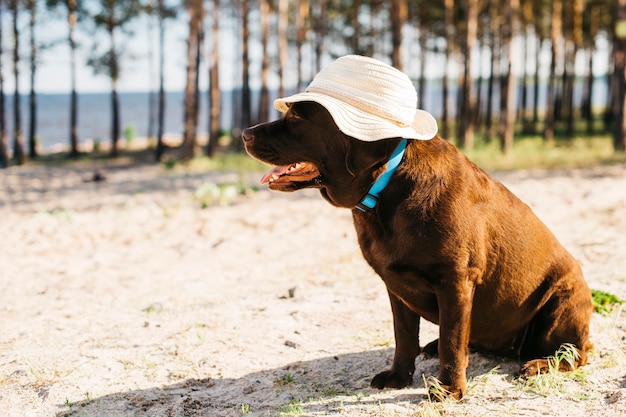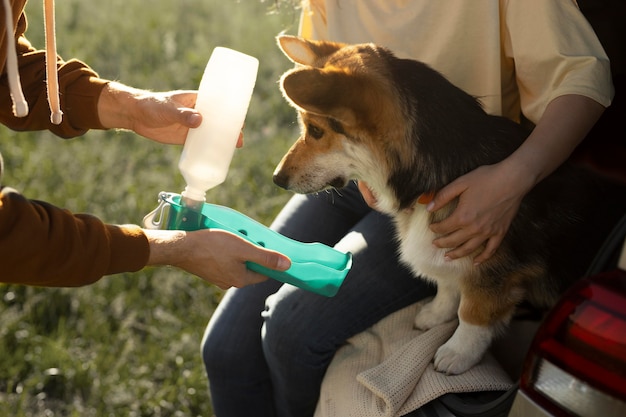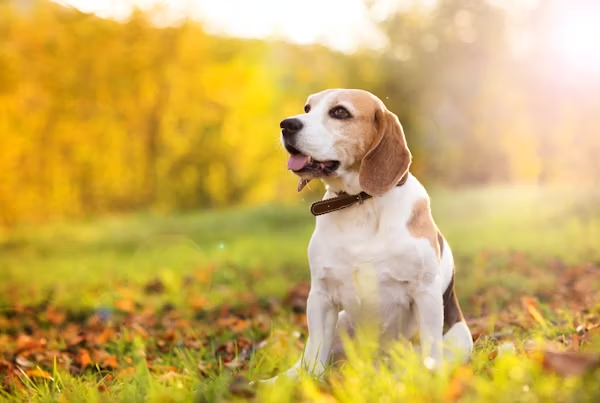Recognizing Heat Stress Symptoms in Pets


Recognizing Heat Stress Symptoms in Pets: A McKinney Guide to Keeping Your Pet Cool and Safe
As the August sun climbs high over McKinney and the humidity settles in, pet owners everywhere face a seasonal challenge: protecting pets in hot weather. At Pet Method Dallas Fort Worth, we understand how much your furry companions mean to you and your family. Our veterinary team at 260 N Coit Rd, Suite 130, McKinney, TX, 75071 is here to help you recognize the earliest heat stress symptoms in pets, so you can take action before a fun summer day turns hazardous.
In this guide, you’ll learn what heat stress looks like in both dogs and cats, why pets in McKinney and surrounding communities are especially at risk during the sweltering summer months, and how to respond if your pet shows warning signs. We’ll also cover steps you can take at home to protect pets in hot weather, plus when to schedule an appointment with your veterinarian for expert care. By the end, you’ll have a clear plan to keep your pet cool, comfortable, and safe all summer long.
If you’re ever concerned about sudden changes in your pet’s health, our veterinary professionals offer comprehensive services, from annual wellness exams to urgent care, ensuring your pet gets the attention they need—right here in McKinney.
Understanding Heat Stress Symptoms in Pets
Key Signs Every Pet Owner Should Watch For
Recognizing heat stress symptoms in pets is crucial, especially during the hottest weeks in Texas. Dogs and cats cannot cool themselves as efficiently as people, making them vulnerable to heat exhaustion and, in severe cases, life-threatening heatstroke.
Common symptoms of heat stress in pets include excessive panting, drooling that seems out of the ordinary, and an obvious struggle to catch their breath. You may also notice your pet seeking shade or cool surfaces, appearing lethargic, or acting weak and unsteady on their feet. Other warning signs are bright red gums, rapid heartbeat, vomiting, or diarrhea. In more advanced stages, pets might collapse or experience seizures.
It’s important to remember that cats often hide discomfort, so subtle changes such as increased grooming or simply seeking out the coolest spot in the house can indicate trouble. For both species, any combination of these symptoms deserves immediate attention, especially if your pet has been outdoors or in a warm environment.
When Heat Stress Is Most Likely to Occur in McKinney
Heat stress can strike during routine walks, backyard play, or even while lounging indoors without adequate ventilation. McKinney’s August temperatures, combined with high humidity, create conditions where pets can overheat quickly—even in the shade or on cloudy days.
Certain pets face higher risks. Flat-faced breeds like Bulldogs and Persians, pets with thick or dark coats, elderly animals, young puppies, and those with underlying medical conditions are especially susceptible. Even a quick car ride can become dangerous if your pet is left in a parked vehicle, as temperatures rise rapidly inside, even with the windows cracked. Understanding these risk factors helps you stay vigilant and proactive about preventing heat-related emergencies.
What Causes Heat Stress in Pets?
The Science Behind Overheating
Heat stress develops when a pet’s natural cooling mechanisms can’t keep up with environmental heat. Dogs and cats primarily cool themselves by panting and, to a lesser extent, through their paw pads. Unlike humans, they do not sweat over most of their bodies, which makes it hard for them to dissipate excess heat, especially during periods of high humidity common in McKinney and surrounding communities.
Situations that commonly lead to heat stress in pets include vigorous exercise during the hottest parts of the day, being confined in poorly ventilated spaces, or prolonged sun exposure. Even indoor pets are at risk if air conditioning fails or if airflow is restricted. Recognizing these contributing factors can help you plan safer activities and environments for your animal companions.
Why Local Pets Are at Greater Risk
The climate in McKinney is known for its muggy, sun-soaked summers. Pets acclimated to cooler homes or those brought in from other regions might not cope as well with sudden heat waves. Additionally, city environments with lots of concrete and minimal shade can amplify temperatures, putting pets at risk during walks or outings. Understanding the local climate’s impact on your pet’s health is the first step to effective prevention.
How Veterinarians Manage Heat Stress in Pets
What to Expect During a Veterinary Visit
If you suspect your pet is suffering from heat stress symptoms in pets, it is crucial to seek veterinary attention as soon as possible. Our veterinary professionals at Pet Method Dallas Fort Worth are trained to assess the severity of your pet’s condition and provide targeted care. The first step typically involves moving your pet to a cool, shaded area and taking their temperature to determine the extent of overheating.
Treatment approaches for heat stress in pets may include the administration of intravenous fluids to address dehydration, careful cooling with wet towels or fans, and monitoring for secondary complications such as kidney damage or organ failure. In some cases, oxygen therapy or medications to control seizures may be necessary.
Our team may recommend diagnostic testing, such as bloodwork or urinalysis, to assess organ function and detect any lasting effects from overheating. After stabilization, your pet might require ongoing monitoring to ensure a full recovery. For more information on how our clinic manages a wide range of health concerns, explore our resources on common pet conditions.
The Importance of Follow-Up and Long-Term Care
After an episode of heat stress, your pet’s health should be monitored closely for a few days. Some animals may develop complications that are not immediately apparent, such as gastrointestinal upset or changes in behavior. Our veterinarians will provide guidance tailored to your pet’s specific risks and may recommend a follow-up visit to ensure their recovery is on track. Establishing a relationship with a trusted veterinarian in McKinney gives you peace of mind and helps prevent future health scares.
Preventing Heat Stress: How to Protect Pets in Hot Weather
Practical Steps for McKinney Pet Owners
Taking steps to protect pets in hot weather is one of the most effective ways to prevent heat stress. Start by limiting outdoor activities to the early morning or late evening, when temperatures are cooler. Make sure your pet always has access to fresh, cool water and shaded areas, whether at home or on the go. Never leave your pet in a parked car, even for a few minutes, as temperatures can soar to dangerous levels rapidly.
Other strategies include keeping walks short, using cooling mats or vests, and ensuring your home is well-ventilated. For pets with thick coats, regular grooming can help keep them comfortable. If your pet is at higher risk due to age, breed, or medical history, speak with your veterinarian about tailored precautions.
For those planning vacations or extended absences, arranging for a trusted pet sitter or boarding facility with climate control can prevent accidental overheating. Even indoor cats can benefit from access to cool surfaces and plenty of water. By planning ahead and staying vigilant, you can make the Texas summer safe and enjoyable for your four-legged family members.
Home Monitoring and Early Intervention
It’s helpful to monitor your pet’s behavior and physical condition each day. Watch for early signs of discomfort, such as restlessness, seeking cool spots, or changes in eating and drinking habits. Keeping a digital thermometer handy allows you to check your pet’s temperature if you suspect trouble; a normal temperature for most dogs and cats ranges from 100 to 102.5 degrees Fahrenheit. If your pet’s temperature climbs above this range, or if they display any warning signs, immediate action is required.
For ongoing guidance or if you’re unsure how to interpret your pet’s symptoms, consider utilizing our virtual veterinary care services. This resource offers peace of mind for pet owners who want quick, professional advice from the comfort of home.
When to Seek Veterinary Care for Heat Stress Symptoms
Knowing When Professional Help Is Needed
There are times when home care is not enough, and professional evaluation becomes necessary. If your pet exhibits persistent panting, drooling, vomiting, or diarrhea after being in the heat, it’s time to schedule an appointment. Additional red flags include collapse, seizures, confusion, or unresponsiveness. These symptoms signal a medical emergency and should never be ignored.
Prompt action can make all the difference in your pet’s outcome. Our veterinary professionals at Pet Method Dallas Fort Worth are equipped to handle emergency situations and can provide lifesaving treatment if needed. If you are ever in doubt, it’s always safer to err on the side of caution and contact your veterinarian.
How to Prepare for a Veterinary Visit
Before heading to the clinic, move your pet to a cool environment, offer small sips of water, and avoid using ice-cold water or ice packs directly on their skin, as rapid cooling can be dangerous. Bring any relevant information about your pet’s recent activities, medical history, and observed symptoms to help our team provide the best possible care.
If your pet has underlying health conditions or you have concerns about summer heat, scheduling a wellness examination can help you identify risks and create a personalized prevention plan.
Keeping Your Pet Safe: Your Trusted McKinney Vet Near Me
Heat stress symptoms in pets can be frightening, but with the right knowledge and a proactive approach, you can protect pets in hot weather and enjoy the summer together. Remember, the most important steps involve watching for early signs, providing plenty of water and shade, and acting quickly if your pet shows signs of distress.
At Pet Method Dallas Fort Worth, our team of veterinarians is committed to supporting families in McKinney and surrounding communities throughout every season. If you notice any heat stress symptoms in your pet or want to discuss preventive care, we encourage you to schedule an appointment with our compassionate veterinary professionals. You can also learn more about protecting your pet’s health with our comprehensive pet exam services or seek advice from our virtual veterinary care team.
To schedule your visit or speak with a member of our team, call (469) 581-8609 or stop by our convenient McKinney location. When searching for a vet near me who truly understands the local climate and your pet’s unique needs, trust Pet Method Dallas Fort Worth to provide quality veterinary services in McKinney—helping your pet stay safe and healthy all summer long.
This article is intended for informational purposes only and does not replace professional veterinary advice. If you suspect your pet is experiencing a medical emergency, seek immediate attention from a veterinarian.


















